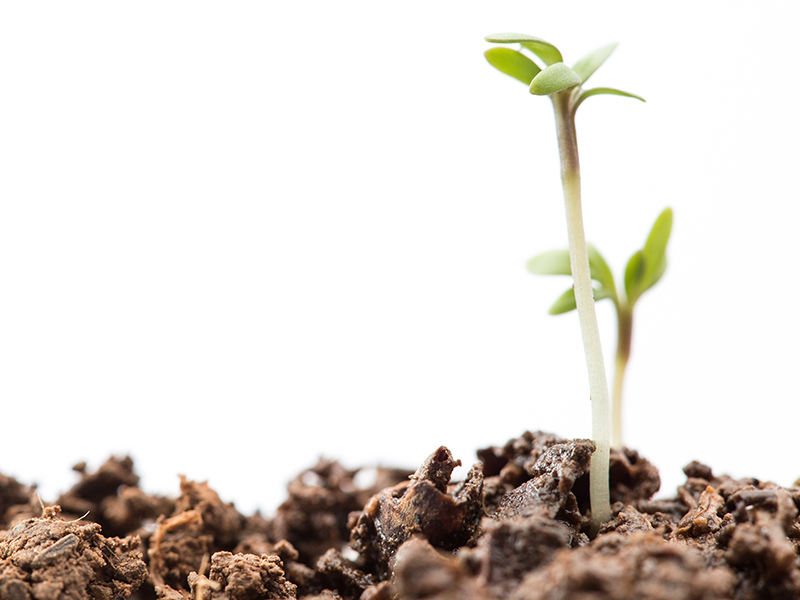Spring is around the corner, and now is the perfect time to start prepping flower and vegetable gardens for the new season.
To begin, “clear out any leaves and debris from beds and cut back last year’s foliage from perennials,” says Grace Chapman, horticulture director at Lewis Ginter Botanical Garden in Richmond, Virginia. “If you didn’t remove last year’s annuals, remove them to make room for new plantings. Take note if any plants are showing signs of disease and remove them promptly.”
Ensuring soil is fit for planting is vital.
“Soil health is a very important factor in both ornamental and vegetable gardens,” Chapman says. “Before planting, it is best to perform a soil test to determine if your soil is lacking any essential nutrients, if organic matter needs to be increased, if drainage needs to be addressed and if the pH needs to be adjusted.”
Care for the ground where you want to plant by adding compost and mulch.
“Compost will help to feed the soil and improve its structure,” says Chapman. “After compost, add a two to three inch layer of mulch. Mulching early will give you a jump start on the weeds by smothering out any weed seeds before they are able to germinate. Also, start getting your stakes and structures prepared and placed in the garden. Try using natural materials, such as bamboo or limbs, that resulted from your winter pruning.”
Jim Word, a master gardener in Williamsburg, Virginia, suggests now is also a good time to decide what to plant.
“Decide what you want to grow and grow only what you want to eat,” he says. “Plot your vegetable garden. Consider the size of the plant at maturity. Squash need 5 square-feet; tomatoes, 3; peppers, 2. Consider also the height of plants at maturity. Some tomato plants reach more than 5 feet. Paths are needed as you walk among the plants weeding, watering and harvesting, at least 1 foot wide. Record your plan on paper and retain to reflect success and failure of the growing season.”
Some plant seeds, such as tomato, pepper and eggplant, can be started indoors under fluorescent lights.
“The use of a special heating pad under a container with starting mix and seed will hasten germination,” says Word.
Cool weather vegetables, such as radishes, spinach, lettuce, turnips, garlic and carrots, can be planted outside in early spring, but most vegetables will have to wait for warmer weather.
“Do not be in a rush to start seeds outdoors or to set out started plants,” says Suzie Kilgore, a master gardener intern in Hampton, Virginia. “As a general rule, delay sowing seeds of warm-weather annuals outdoors or setting out started plants until after the last frost date. Most such seeds will not germinate well in soils below 60 degrees. If the soil is too cold when seed is sown, seeds will remain dormant until the soil warms, and may rot instead of germinating.”
Soil health is important to ensure proper growth of plants and produce. Word suggests testing the pH in soil every three years. The soil in vegetable gardens should have a pH of 6.5 to 6.8. Soil test kits can be found at local garden shops, as well as through the Virginia Cooperative Extension.
“Add soil amendments to the vegetable beds to obtain proper pH,” says Word. “If pH is too low, dolomitic lime is added. If it is too high on the pH scale, add small amounts of ammonium sulfate.”
In addition, add organic material to the soil such as compost, manure, sphagnum peat moss or shredded leaves. Doing this in the fall allows these materials to decompose over the winter and spring leaving spaces for plant roots to grow and water to penetrate, according to Word.
Seasonal Planting Timeline
Here’s a seasonal timeline for planting vegetables provided
by the Virginia Master Gardeners. Keep in mind that the last
frost in the Tidewater Area is April 10-21 and the first frost
is November 8-28.
Late Winter/Early Spring
Asparagus, beets, broccoli, Brussels sprouts, cabbage, carrots, cauliflower, kale, lettuce, onion, peas, potatoes, radishes, spinach, turnips
Late Spring/Early Summer
Beans, corn, eggplant, okra, peppers, pumpkins, summer squash, sweet potato, tomato, watermelon
Late Summer/Early Fall
Beans, beets, broccoli, cabbage, cauliflower, collards, cucumber, endive, garlic, kale, lettuce, onions, radishes, rutabaga, turnips

